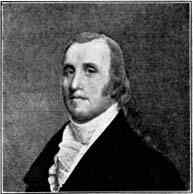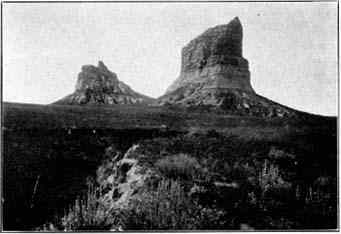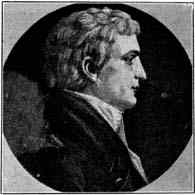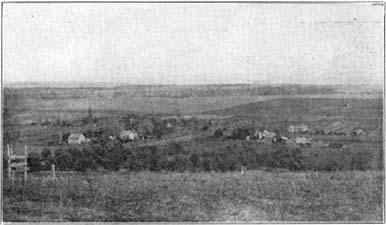|
CHAPTER V
Court House and Jail The story of the negotiations of Napoleon and Thomas Jefferson which ended in Nebraska's becoming part of the United States need not be told here. Enough to say that when the French flag came down at New Orleans on December 20, 1803, the prairies and valleys of Nebraska had changed sovereignty at a price of less than five cents per acre, with the inhabitants thrown in. There were about 40,000 of these inhabitants, half of them, like the Pawnees and Omahas, living in settled villages with the crude beginnings of agriculture, the other half, like the Sioux and Cheyennes, in a nomad state. For a hundred years the French influence had been dominant in Nebraska. It is true that from 1762 until 1802 the province was nominally a possession of Spain. There were Spanish governors at New Orleans and at St. Louis, but the people, the language, the civilization, remained French. The earliest documents written on Nebraska soil were in the French language. There is an interesting |
William Clark affinity between the sounds of the Gallic tongue and those of the aboriginal Nebraskans. The nasal "n" which the English has not is prominent in both of them. The half-breed and even the Indian population here had made progress in learning how to "parley voo" and I have myself heard at this day French words and phrases with a correct pronunciation from the lips of full-blood Indians in their Nebraska homes. An interesting proof of the French influence is found in the commissions and letters sent by the American governors at St. Louis to Nebraska chiefs. For a number of years these were written in parallel columns,--English on one side, French on the other. And even as late as 1854 the log books of the steamboats running to Nebraska towns are written in the language of Victor Hugo and Maupassant. 
Meriwether Lewis |
Site of Lewis and Clarke Council Stripes was raised for the first time in Nebraska and two men sent with another flag up the Platte to the villages of the Otoes and Pawnees. At nine o'clock on July 30th the expedition came to some timber land at the foot of a high bluff and made camp. Here was killed the first elk and the first badger, and here, on August 3, 1804, was held the first council between representatives of the United States and the Indians of Nebraska. This council is the great historic event in early Nebraska annals. Fourteen Indians, members of the Otoe and Missouri tribes, were present on one side and the whole white force on the other. The meeting was held under an awning made from the sail of the largest boat. Presents were exchanged. Peace and protection were promised and the Indians acknowledged the authority of the United States. The spot was called by Captain Lewis Council Bluff. The events of this day were celebrated August 3, 1904, by a pageant reproducing the council of a century ago and the dedication of a boulder of Nebraska rock with commemorative inscription. The village of Fort Calhoun now stands on the summit of Council Bluff and the council of 1804 was held within a few hundred yards of the railway station there. |
 |
 |
 |
 |
|
@ 2002 for the NEGenWeb Project by Pam Rietsch, Ted & Carole Miller |
|||


